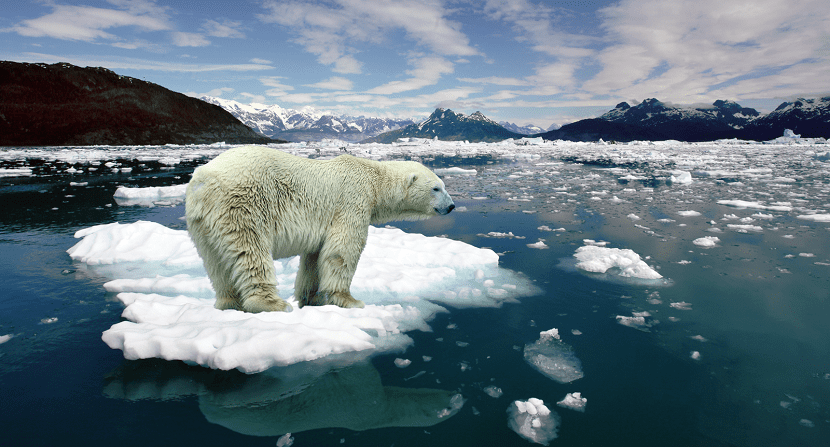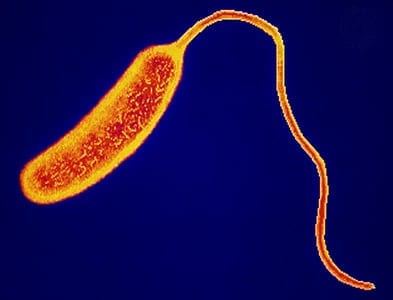
Climate change has powerful and devastating consequences in store for our future generations. In fact, many of its effects are already being seen today. However, global efforts to reduce greenhouse gas emissions are not yet sufficient and the thawing of the great polar areas as the Arctic is imminent.
What are the consequences that the total melting of the Arctic would have for the world?
Recent temperature records
Since 2014, when higher global average temperatures were recorded since it was measured, there has been a almost a hundred infections by bacteria of the genus vibrio. This year 2014 has been valued as the warmest year since temperatures are recorded. Among the named bacteria, we find those that cause cholera on the coasts of Sweden and Finland. Some of these cases occurred about 160 miles from the Arctic Circle. Why can these bacteria affect latitudes close to the Arctic?

Bacteria of the genus vibrio
Effects of climate change that disrupt ecosystems
Climate change and its negative effects They are disrupting the functioning and range of many species of flora and fauna. The species most vulnerable to these changes are associated with the tropics and are migrating north due to the increase in temperature. These bacteria of the genus vibrio They need high temperatures to survive well and due to rising temperatures globally, they can increase its area of distribution and survive in places of greater northern latitude. The emergence of diseases and pathogens are just some of the consequences that the thaw produced by climate change will have.

It should be mentioned that global warming is not the same in all parts of the world. There are regions of the planet that, due to their geographical location, get hotter than others. For example, in the Arctic an effect called arctic amplification for which the thaw there is more pronounced than in other frozen regions. This can be explained in a more or less simple way: Thawing in favor of water reduces the region's ability to reflect incident solar radiation. That is to say, the terrestrial albedo It decreases as there is less ice to reflect radiation and, therefore, the amount of heat absorbed by the ground is greater. This causes the surface to heat up even more and feed back the thaw, which causes pathogens to access these more habitable areas and spread.
Bacteria spread
Although these bacteria cannot be seen, marine bacteria are the main component of biomass in the oceans. This previously named species of bacteria of the genus vibrio they are pathogenic. Another danger posed by thawing is the melting of the permafrost from the northern fringes of Siberia, Canada and Greenland. In the same way as mentioned above, as all the ice layer on the ground melts, allows this type of pathogenic bacteria to spread and cause serious diseases.

Permafrost (frozen ground)
CSIC researchers found DNA from hitherto unknown viruses in Svalbard lakes in June 2015. Two months later the unearthing of a 30.000-year-old virus trapped in Siberian ice. This can be a serious health problem around the world due to the fact that the functioning of this type of bacteria and the fact that they can cause new diseases in humans is not well understood.
The thaw paradox and climate change
Climate change melts the Arctic ice and this feeds back to climate change. A comprehensive report from the US Academies of Sciences on the global impacts of the 2015 Arctic thaw highlighted how reducing the albedo effect, releasing methane and carbon trapped in permafrost, or altering ocean circulation will intensify warming global. And that probably destroy any remaining ice in the Arctic.